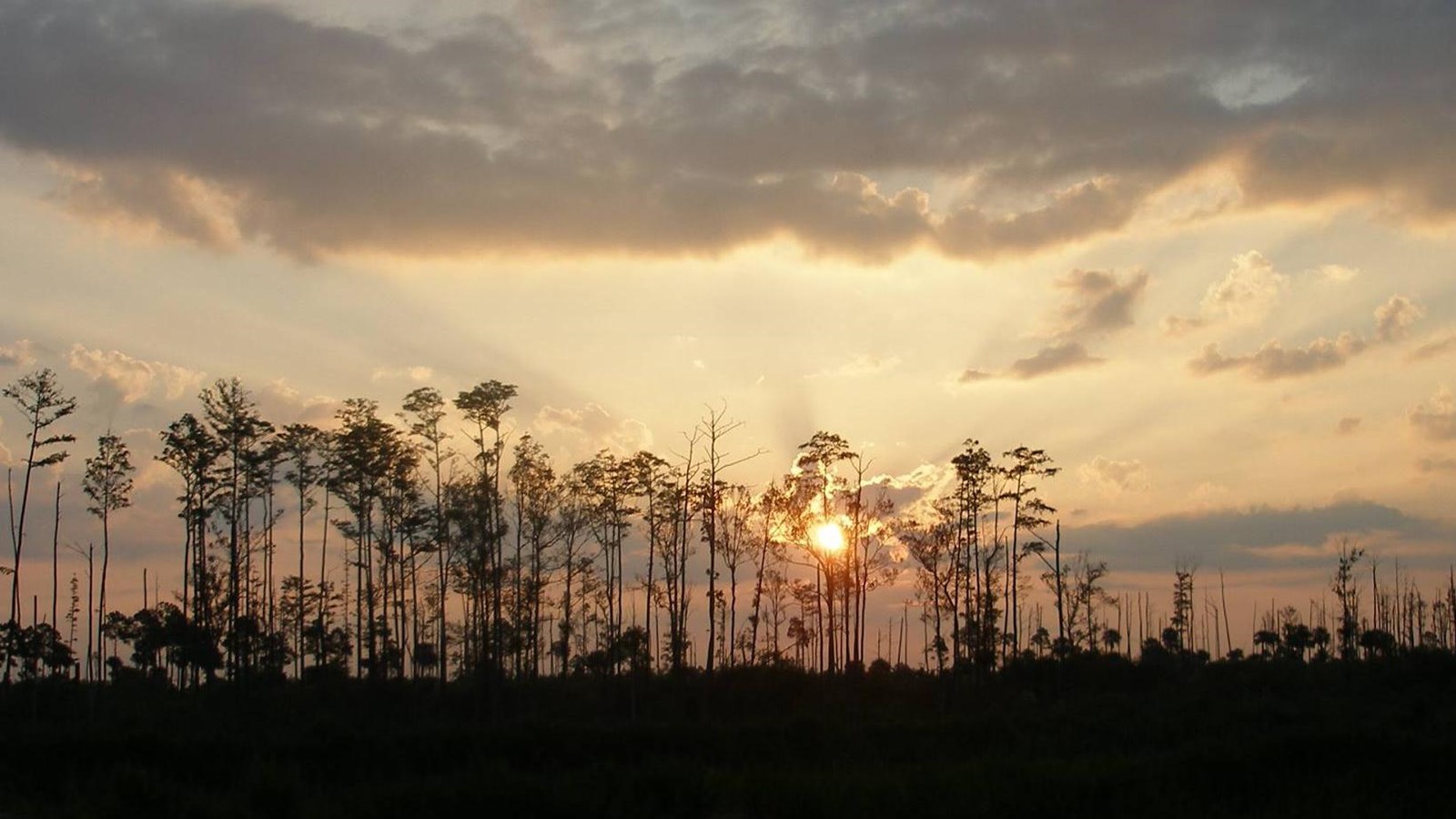Last updated: March 29, 2022
Place
Pine Flatwoods at Cedar Point

NPS
You have entered the perfectly named habitat of the pine flatwoods, and as you might have guessed this environment is characterized by its canopy of pines and its flat topography. The pine flatwoods are considered a monoculture, or an area dominated by a single type of plant, in this case pines. While it may be considered a monoculture it is far from boring or lacking in biodiversity! Pine flatwood habitats are woodlands with widely spaced pine trees, a sparse to moderate shrub layer, along with a dense, species-rich groundcover of grasses and herbs. The canopy is made of longleaf pines and slash pines but other plants commonly occurring in this community are saw palmetto, wax myrtle, blueberries, and a high diversity of grasses; as many as 40-50 species. Animals include green treefrog, gopher tortoise, bobcat, red-bellied woodpecker, cotton mouse, and fox squirrel. The flat topography, soils, and seasonal rain of the pine flatwoods strongly influence its hydrology. Some hydrological characteristics of flatwoods in the rainy season include minimal water runoff resulting in waterlogged and poorly aerated soils. During the rainy season and there may be standing water. Translation: MUD. But in the dry season - high evaporation draws water from upper soil layers, droughty conditions result.
The pine flatwood is a habitat dramatically shaped by the forces of nature, not just water but fire as well. Fire is a natural and dominant factor in the ecology here. In the past, prior to human influence, frequent lightning-ignited fires maintained the rich diversity of these communities. Without the presence of fire, the groundcover will slowly degrade and transition overtime into oak dominated hammocks. Prior to human influence, it is generally thought that lightning-ignited fires would have occurred on a frequency of every 1 to 5 years in North Florida. Lightning-ignited fires would have also predominately occurred during the late-spring to early summer months in this area due to frequently dry conditions and the increasing presence of scattered thunderstorms during this season. Plant adaptations to fire are widely present including the thick bark of longleaf pines, which protects adult trees from fire damage. Even seedling trees, with their buds protected by a thick mass of needles, are capable of surviving frequent, light ground fires. Today, much of this habitat has been converted to other uses such as residential and commercial development, as well as agricultural operations. In the late 1800s turpentine production took over areas like this exploiting both the land and people in oppressive camps. Remaining portions of this habitat often suffer from historical fire suppression policies as well. Animals have similarly adapted to fires in pine flatwoods. Many species can detect and outrun wildfires, but others hide. Gopher Tortoises are commensal, they share their homes with many other creatures but when fire sweeps through even more animals use the occupied and abandoned burrows for safety. The pine flatwoods are home to threated or engendered wildlife including Florida black bears, Southeastern kestrels, red-cockaded woodpeckers, Florida sandhill cranes, and eastern indigo snakes. Natural forces of water and fire shape the land, creatures, including endangered species call pine flatwoods home, although the name maybe a little on the nose, these is nothing boring about this environment.
